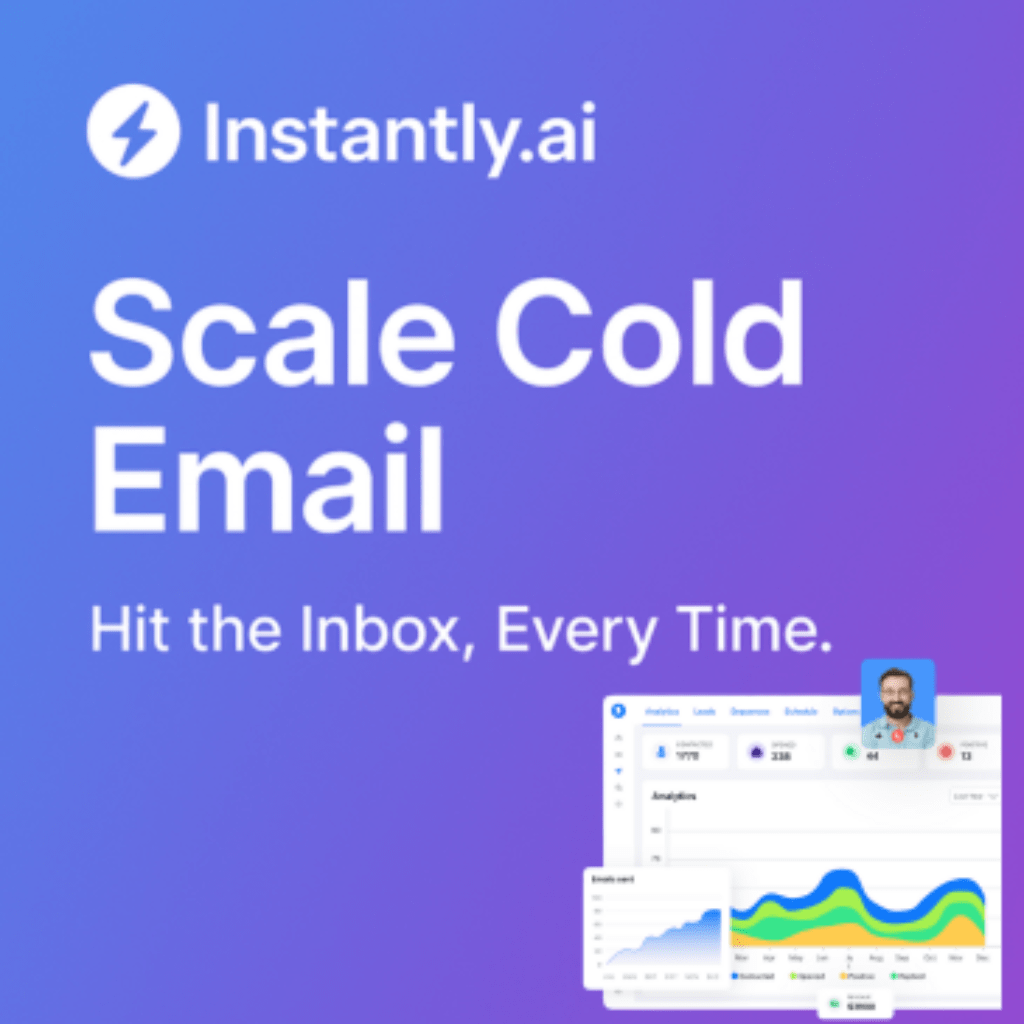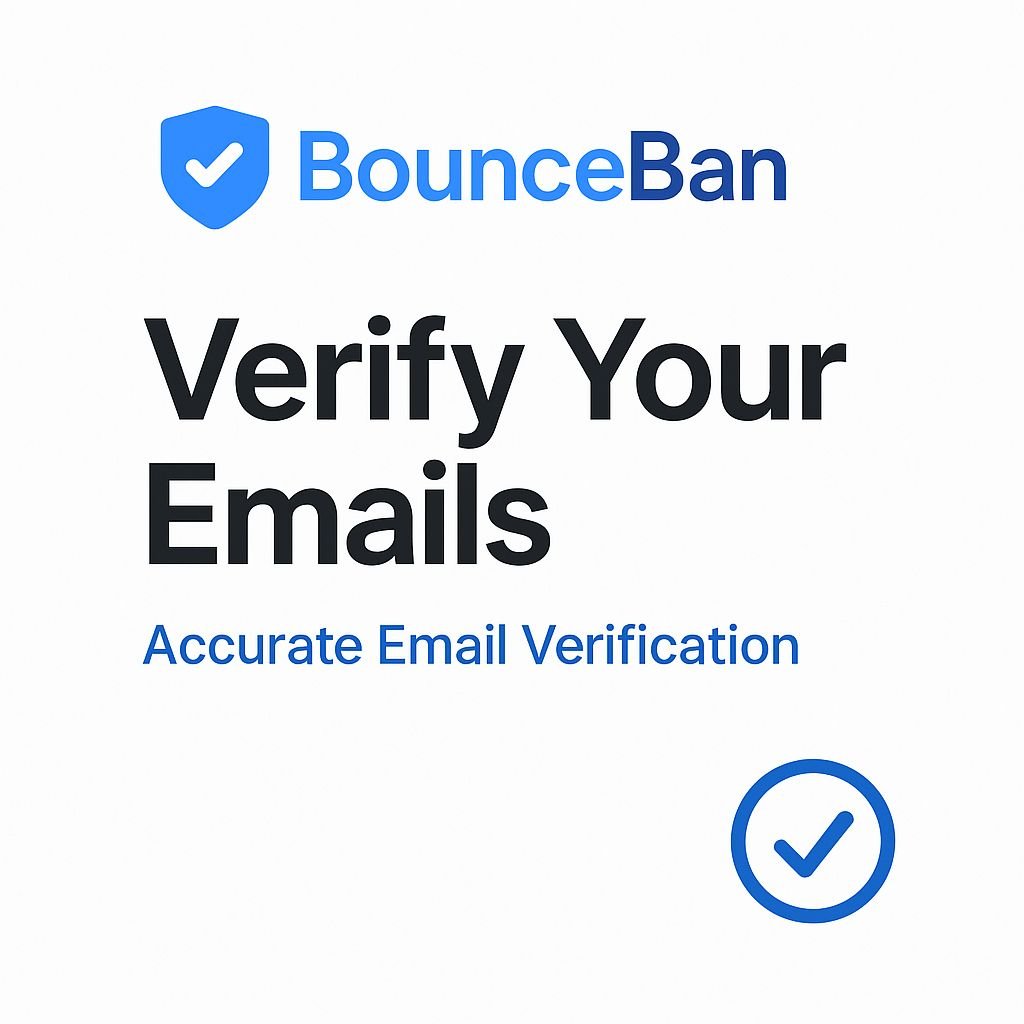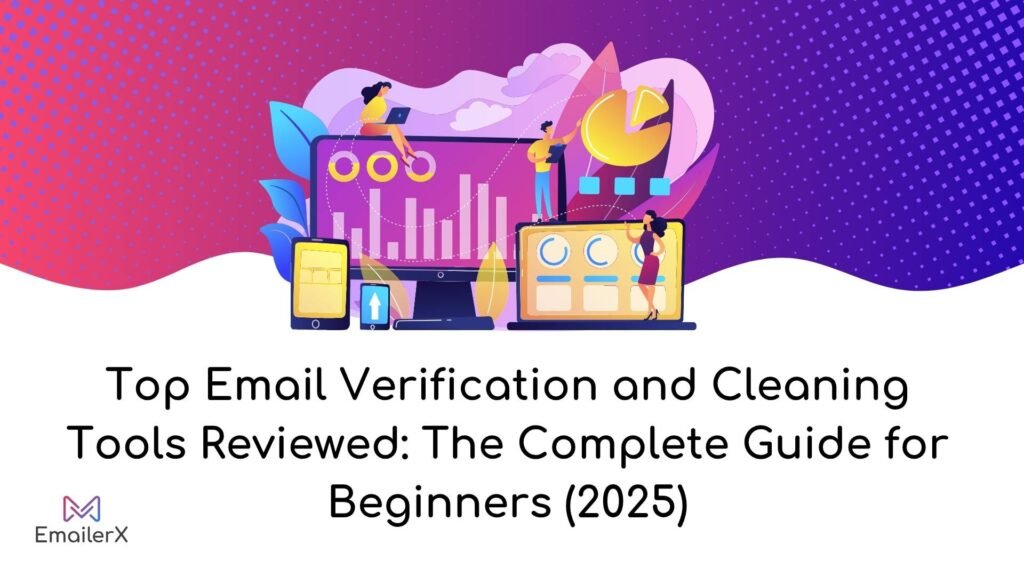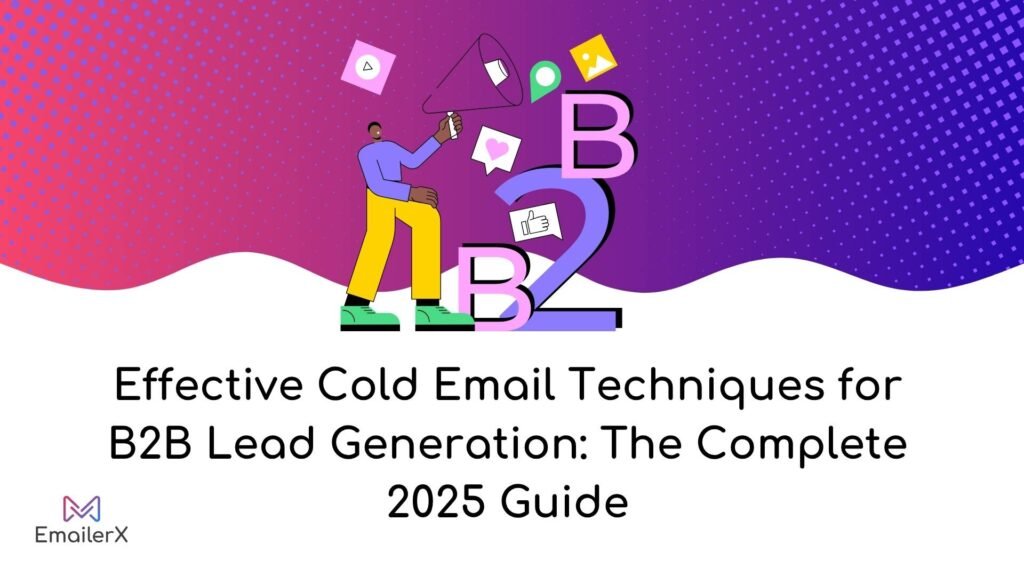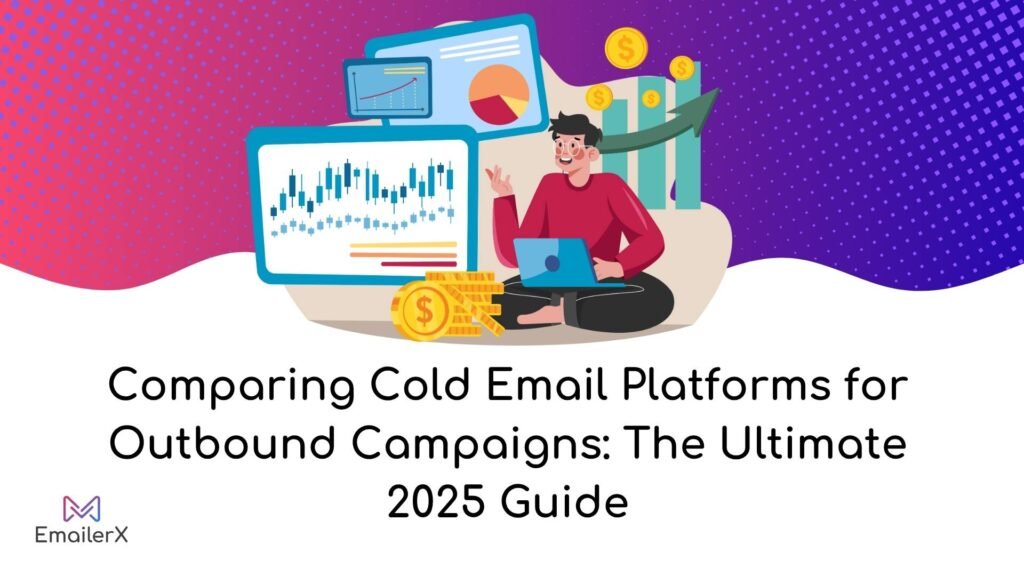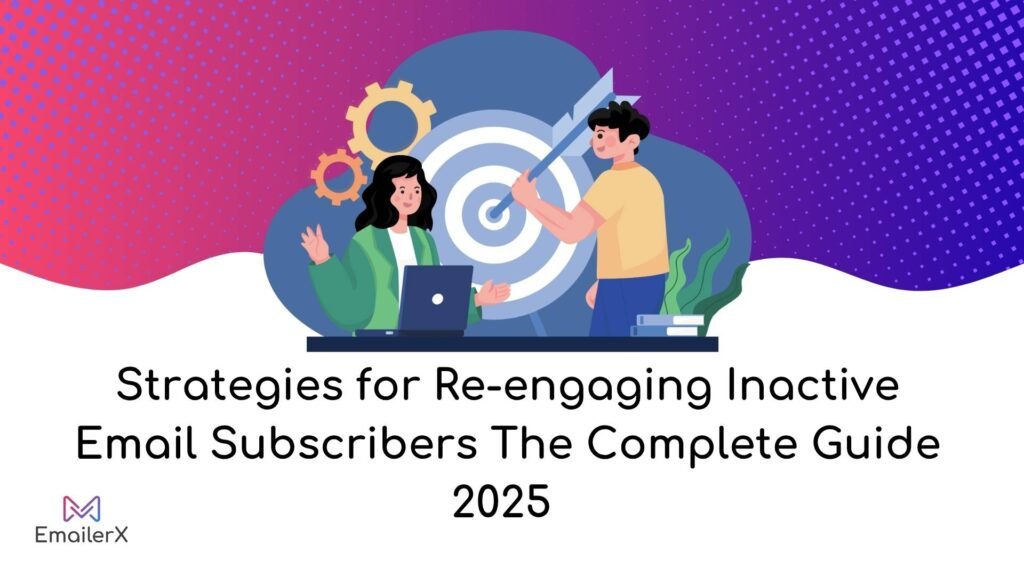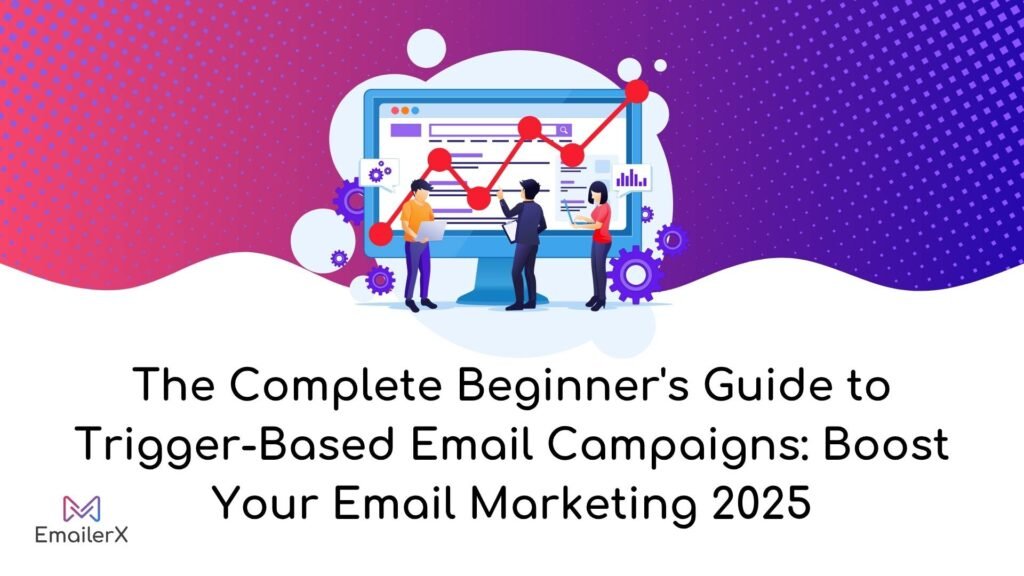In today’s fast-paced digital landscape, automation tools for streamlining email have become essential for marketers aiming to maximize efficiency and drive results.
As we move into 2025, the demand for smarter, more integrated solutions is reshaping how email campaigns are created, managed, and optimized.
This ultimate tech stack guide dives into the most powerful automation tools available, helping you build a seamless workflow that saves time, enhances personalization, and boosts engagement.
Whether you’re a seasoned email strategist or just starting out, understanding the right tools can transform your campaigns and elevate your marketing game.
Table of Contents
ToggleUnderstanding Automation Tools for Streamlining Email Campaigns
Email automation tools are software platforms that enable businesses to send targeted, personalized emails automatically based on specific triggers, behaviors, or schedules.
These tools eliminate the need for manual email sending while ensuring your audience receives the right message at the right time.
Key Features of Email Automation Software:
- Trigger-based messaging: Emails sent based on user actions (purchases, sign-ups, website visits)
- Behavioral customization: Tailored messaging driven by individual customer actions and demonstrated interests
- Automated nurturing sequences: Pre-scheduled email series designed to guide prospects through a progressive engagement journey
- Audience categorization: Organizing subscribers into focused clusters to deliver highly personalized and contextually appropriate communications
- Split testing: Comparing multiple message versions to enhance campaign effectiveness and maximize results
- Analytics and reporting: Detailed insights into campaign performance and ROI
How Email Automation Works
Email automation operates on a simple “if-then” logic:
- When a shopper leaves items in their cart → Trigger an automated recovery message
- If someone subscribes to your newsletter → Then send a welcome sequence
- When a buyer completes their initial order → Deliver a personalized appreciation message featuring suggested products
Why Email Automation Is Essential in 2025
The digital landscape has evolved dramatically, making email automation not just beneficial but essential for business success. Here’s why:
1. Improved Efficiency and Time Savings
Automated emails generate 37% of email sales from just 2% of total volume, according to recent studies. This means you can achieve better results with less manual effort.
2. Enhanced Personalization at Scale
Modern consumers expect personalized experiences. 90% of consumers find personalized content appealing, and automation tools make it possible to deliver this at scale.
3. Better Customer Experience
Triggered email sequences deliver precisely timed, contextually appropriate messages that enhance the overall customer experience. These automated communications achieve 52% superior open rates and 332% increased click-through performance when compared to manually sent campaigns.
4. Increased Revenue and ROI
Automated email sequences enable businesses to recapture abandoned opportunities, cultivate potential customers, and drive additional transactions from existing buyers.. Abandoned cart emails alone can recover 15-25% of lost sales.
5. Data-Driven Insights
Automation platforms provide detailed analytics that help you understand customer behavior and optimize your campaigns for better performance.
Types of Email Marketing Automation
Gaining insight into various email automation categories will enable you to select the most appropriate platforms and approaches that align with your specific business objectives and requirements.
1. Welcome Email Automation
Purpose: Introduce new subscribers to your brand and set expectations
Trigger: Email sign-up or account creation
Best for: All businesses looking to make a strong first impression
Example Tools:
- Mailchimp – Great for beginners with pre-built welcome sequences
- ActiveCampaign – Advanced personalization options
2. Abandoned Cart Email Automation
Purpose: Recover lost sales from customers who left items in their shopping cart
Trigger: Cart abandonment (typically after 1-24 hours)
Best for: E-commerce businesses
Key Features to Look For:
- Dynamic product displays
- Discount code integration
- Multiple follow-up sequences
- Mobile optimization
3. Lead Nurturing Automation
Purpose: Guide prospects through the sales funnel with educational content
Trigger: Lead magnet download, form submission, or specific actions
Best for: B2B companies, consultants, and service providers
4. Re-engagement Campaigns
Purpose: Win back inactive subscribers
Trigger: Lack of engagement over a specified period
Best for: Businesses with large email lists and declining engagement
5. Post-Purchase Automation
Purpose: Enhance customer experience and encourage repeat purchases
Trigger: Purchase completion
Best for: E-commerce and subscription-based businesses
6. Birthday and Anniversary Emails
Purpose: Build customer loyalty with personalized celebrations
Trigger: Date-based (birthdays, purchase anniversaries)
Best for: Retail, hospitality, and consumer brands
Best Email Automation Tools by Category
Best Overall Email Automation Platforms
1. ActiveCampaign – Best for Advanced Automation
Pricing: Starting at $15/month
Best for: Growing businesses and agencies
Key Features:
- Advanced automation builder with conditional logic
- CRM integration and lead scoring
- Behavioral triggers and website tracking
- Machine learning-powered send time optimization
- 900+ pre-built automation templates
Pros:
- Powerful automation capabilities
- Excellent deliverability rates
- Comprehensive reporting and analytics
- Strong integration ecosystem
Cons:
- Steeper learning curve for beginners
- Can be expensive as you scale
2. Mailchimp – Best for Beginners
Pricing: Free plan available, paid plans from $13/month
Best for: Small businesses and beginners
Key Features:
- Drag-and-drop email builder
- Pre-built automation workflows
- Audience segmentation
- A/B testing capabilities
- Integration with 300+ apps
Pros:
- User-friendly interface
- Comprehensive free plan
- Extensive template library
- Strong brand recognition
Cons:
- Limited automation features on free plan
- Can become expensive with growth
- Fewer advanced features compared to competitors
3. Klaviyo – Best for E-commerce
Pricing: Free up to 250 contacts, paid plans from $20/month
Best for: E-commerce businesses, especially Shopify stores
Key Features:
- Deep e-commerce integrations
- AI-powered product recommendations
- Advanced segmentation based on purchase behavior
- SMS marketing integration
- Real-time personalization
Pros:
- Excellent e-commerce focus
- Powerful segmentation capabilities
- Strong Shopify integration
- Comprehensive analytics
Cons:
- Can be complex for beginners
- Expensive as your list grows
- Primarily focused on e-commerce
4. Brevo (formerly Sendinblue) – Best Value for Money
Pricing: Free plan available, paid plans from $25/month
Best for: Small to medium businesses on a budget
Key Features:
- Email and SMS marketing
- Marketing automation workflows
- CRM and sales pipeline
- Transactional email capabilities
- Landing page builder
Pros:
- Excellent value for money
- All-in-one marketing platform
- Strong deliverability
- User-friendly interface
Cons:
- Limited customization options
- Fewer integrations than competitors
- Basic reporting capabilities
5. MailerLite – Best for Simplicity
Pricing: Free up to 1,000 subscribers, paid plans from $9/month
Best for: Small businesses and content creators
Key Features:
- Simple automation builder
- Email editor with drag-and-drop functionality
- Landing page builder
- Pop-up and form creator
- Basic e-commerce features
Pros:
- Very affordable pricing
- Clean, intuitive interface
- Good deliverability rates
- Excellent customer support
Cons:
- Limited advanced features
- Basic reporting
- Fewer integrations
6. Instantly – Best for Cold Outreach
Pricing: Starting at $37/month
Best for: Sales teams and agencies doing cold outreach
Key Features:
- Unlimited email accounts
- Advanced deliverability features
- Lead database integration
- Team collaboration tools
- AI-powered personalization
Pros:
- Excellent for cold email campaigns
- Strong deliverability focus
- Comprehensive lead management
- Agency-friendly features
Cons:
- Focused primarily on cold email
- Learning curve for setup
- Requires technical knowledge for optimal use
7. Lemlist – Best for Personalized Cold Outreach
Pricing: Starting at $59/month
Best for: Sales professionals and agencies
Key Features:
- Video and image personalization
- LinkedIn automation
- Multi-channel sequences
- Advanced analytics
- CRM integrations
Pros:
- Unique personalization features
- Multi-channel approach
- Strong integration capabilities
- Excellent customer support
Cons:
- Higher pricing
- Complex setup process
- Requires quality lead data
8. HubSpot – Best All-in-One Platform
Pricing: Free plan available, paid plans from $50/month
Best for: Growing businesses needing comprehensive marketing tools
Key Features:
- Complete marketing, sales, and service platform
- Advanced automation workflows
- Comprehensive CRM integration
- Detailed analytics and reporting
- Extensive app marketplace
Pros:
- Complete business platform
- Excellent free plan
- Strong integration ecosystem
- Comprehensive feature set
Cons:
- Can be overwhelming for beginners
- Expensive for advanced features
- Steep learning curve
9. Salesforce Marketing Cloud – Best for Enterprise
Pricing: Starting at $1,250/month
Best for: Large enterprises with complex needs
Key Features:
- Advanced journey builder
- AI-powered personalization
- Cross-channel marketing automation
- Advanced analytics and reporting
- Enterprise-grade security
Pros:
- Extremely powerful platform
- Excellent scalability
- Advanced AI capabilities
- Enterprise-grade features
Cons:
- Very expensive
- Complex implementation
- Requires dedicated resources
Building Your Complete Email Tech Stack
Creating an effective email automation system requires more than just choosing a single tool. Here’s how to build a comprehensive tech stack:
Core Components of Your Email Tech Stack
1. Email Service Provider (ESP)
Your ESP is the foundation of your email marketing efforts. Choose based on:
- List size and growth projections
- Automation complexity needs
- Integration requirements
- Budget constraints
- Industry-specific features
2. Customer Relationship Management (CRM) System
A CRM helps you manage leads and customers effectively:
- HubSpot CRM – Free option with great email integration
- Salesforce – Enterprise-grade solution
- Pipedrive – Sales-focused and user-friendly
- Zoho CRM – Affordable with good automation features
3. Landing Page Builder
Convert visitors into subscribers with dedicated landing pages:
- Unbounce – Professional landing page creation
- Leadpages – Easy-to-use with good templates
- ConvertKit – Built-in landing pages for creators
- ClickFunnels – Complete funnel builder
4. Analytics and Tracking Tools
Measure and optimize your email performance:
- Google Analytics – Free website tracking
- Hotjar – User behavior insights
- Mixpanel – Advanced event tracking
- Amplitude – Product analytics
5. Lead Generation Tools
Capture more email addresses with:
- OptinMonster – Advanced pop-up and form builder
- Sumo – Free and paid lead capture tools
- Privy – E-commerce focused lead generation
- Hello Bar – Simple notification bars
Integration Best Practices
- Ensure data flows seamlessly between all tools
- Set up proper tracking for attribution and ROI measurement
- Create backup systems for critical data
- Test integrations regularly to prevent data loss
- Maintain clean data across all platforms
Email Automation Best Practices for 2025
Implementing email automation tools is just the first step. To maximize your results, follow these proven best practices:
1. Start with Clear Goals and Strategy
Before diving into tool selection, define:
- What you want to achieve (sales, engagement, retention)
- Who your target audience is (demographics, behaviors, preferences)
- What success looks like (KPIs and metrics to track)
- How automation fits into your broader marketing strategy
2. Focus on Deliverability First
Your emails won’t be effective if they don’t reach the inbox:
- Maintain a clean email list by regularly removing inactive subscribers
- Use double opt-in to ensure quality subscribers
- Monitor your sender reputation with tools like Mail Tester
- Follow email authentication best practices (SPF, DKIM, DMARC)
3. Personalize Beyond First Names
True personalization goes far beyond using someone’s first name:
- Segment based on behavior, not just demographics
- Use dynamic content to show relevant products or services
- Tailor send times to individual preferences
- Customize email frequency based on engagement levels
4. Test Everything Continuously
A/B testing should be an ongoing process:
- Test subject lines to improve open rates
- Experiment with send times for optimal engagement
- Try different email designs and layouts
- Test various call-to-action buttons and placements
5. Mobile-First Design Approach
With over 60% of emails opened on mobile devices:
- Use responsive email templates that adapt to screen sizes
- Keep subject lines short (under 50 characters)
- Design for thumb-friendly clicking and scrolling
- Optimize images for fast loading on mobile connections
- Test on multiple devices before sending
6. Maintain Consistent Brand Voice
Your automated emails should feel personal, not robotic:
- Develop a clear brand voice and style guide
- Train your team on consistent messaging
- Review and update email templates regularly
- Ensure consistency across all touchpoints
- Monitor feedback and adjust tone as needed
7. Respect Subscriber Preferences
Give your audience control over their experience:
- Provide easy unsubscribe options in every email
- Offer preference centers for frequency and content choices
- Honor unsubscribe requests immediately
- Segment based on preferences to reduce unsubscribes
- Be transparent about data usage and email frequency
Getting Started with Email Automation: A Step-by-Step Guide
Ready to implement email automation for your business? Follow this beginner-friendly roadmap:
Phase 1: Foundation Setup (Week 1-2)
Step 1: Choose Your Primary Tool
Based on your needs and budget, select one of these beginner-friendly options:
- Mailchimp for simplicity and brand recognition
- ActiveCampaign for growth and advanced features
- Brevo for budget-conscious businesses
- Klaviyo for e-commerce focused businesses
Step 2: Set Up Your Account
- Import your existing email list (if you have one)
- Create your first audience segments based on basic criteria
- Set up your sender information and authentication
- Design your email template to match your brand
Step 3: Install Tracking and Integration
- Connect your website for behavior tracking
- Set up Google Analytics integration
- Install tracking pixels for email opens and clicks
- Connect your CRM or customer database
Phase 2: First Automation Setup (Week 3-4)
Start with High-Impact, Low-Complexity Automations:
1. Welcome Series (Essential for all businesses)
- Trigger: New email subscription
- Goal: Introduce your brand and set expectations
- Sequence: 3-5 emails over 7-14 days
- Content: Welcome message, brand story, best content, social proof
2. Abandoned Cart Recovery (For e-commerce)
- Trigger: Cart abandonment (1-hour delay)
- Goal: Recover lost sales
- Sequence: 3 emails over 7 days
- Content: Reminder, urgency, discount offer
3. Post-Purchase Follow-up (For all businesses)
- Trigger: Purchase completion
- Goal: Enhance experience and encourage reviews
- Sequence: 2-3 emails over 30 days
- Content: Thank you, usage tips, review request
Phase 3: Optimization and Expansion (Month 2-3)
Advanced Automations to Implement:
- Lead nurturing sequences for different customer segments
- Re-engagement campaigns for inactive subscribers
- Birthday and anniversary emails for customer loyalty
- Cross-sell and upsell sequences based on purchase history
Optimization Activities:
- A/B testing subject lines, content, and send times
- Analyzing performance metrics and adjusting strategies
- Segmenting audiences based on engagement and behavior
- Refining workflows based on customer feedback and data
Phase 4: Advanced Strategies (Month 4+)
- Behavioral triggered campaigns based on website activity
- Predictive analytics for churn prevention
- Multi-channel integration with SMS, social media, and ads
- Advanced personalization using AI and machine learning
- Lifecycle marketing with sophisticated customer journey mapping
Common Email Automation Mistakes to Avoid
Learning from others’ mistakes can save you time and money. Here are the most common pitfalls:
1. Over-Automation
Mistake: Automating every possible touchpoint
Solution: Focus on high-impact automations first, then gradually expand
2. Generic Messaging
Mistake: Sending the same message to everyone
Solution: Segment your audience and personalize content based on interests and behavior
3. Ignoring Mobile Users
Mistake: Designing emails only for desktop viewing
Solution: Use responsive design and test on multiple devices
4. Poor List Hygiene
Mistake: Never cleaning your email list
Solution: Regular remove inactive subscribers and invalid emails
5. Neglecting Testing
Mistake: Setting up automations and forgetting about them
Solution: Continuously test and optimize your campaigns based on performance data
6. Insufficient Segmentation
Mistake: Using basic demographic segmentation only
Solution: Segment based on behavior, preferences, and customer journey stage
7. Weak Subject Lines
Mistake: Generic, boring subject lines that don’t entice opens
Solution: Write compelling, personalized subject lines and A/B test regularly
Measuring Email Automation Success
Track these key metrics to measure the effectiveness of your email automation:
Primary Metrics
- Open Rate: Percentage of recipients who open your emails (industry average: 20-25%)
- Click-Through Rate (CTR): Percentage who click links in your emails (industry average: 2-5%)
- Conversion Rate: Percentage who complete desired actions (varies by industry)
- Revenue Per Email: Total revenue generated divided by emails sent
- List Growth Rate: How quickly your email list is growing
Advanced Metrics
- Customer Lifetime Value (CLV): Long-term value of customers acquired through email
- Engagement Score: Composite measure of how actively subscribers interact
- Churn Rate: Percentage of subscribers who unsubscribe over time
- Deliverability Rate: Percentage of emails that reach the inbox
- Time to Conversion: How long it takes subscribers to make purchases
Setting Up Proper Tracking
- Use UTM parameters for link tracking in Google Analytics
- Set up conversion goals in your analytics platform
- Create custom reports for email-specific metrics
- Implement event tracking for detailed behavior analysis
- Regular review and reporting to stakeholders
Frequently Asked Questions
What are the best email automation tools for beginners?
For beginners, we recommend starting with Mailchimp, Brevo, or MailerLite. These platforms offer:
– User-friendly interfaces with drag-and-drop builders
– Pre-built automation templates
– Comprehensive free plans or trial periods
– Extensive documentation and support resources
– Gradual learning curves that don’t overwhelm new users
Mailchimp is particularly good for those who want brand recognition and extensive integrations, while Brevo offers excellent value for money with built-in CRM features
How much do email automation tools typically cost?
Email automation tool pricing varies significantly based on features and subscriber count:
Free Plans: Available from Mailchimp (up to 500 contacts), Brevo (unlimited contacts), and MailerLite (up to 1,000 subscribers)
Entry-Level Paid Plans: $9-25/month for basic automation features
MailerLite: $9/month
Brevo: $25/month
Mailchimp: $13/month
Mid-Tier Plans: $50-100/month for advanced automation and larger lists
ActiveCampaign: $49/month
Klaviyo: $45/month
GetResponse: $59/month
Enterprise Solutions: $500-2,000+/month for advanced features and high-volume sending
HubSpot Marketing Hub: $800/month
Salesforce Marketing Cloud: $1,250/month
What’s the difference between email automation and email marketing?
Email Marketing is the broader practice of sending emails to promote products, services, or content. It includes both manual campaigns and automated sequences.
Email Automation specifically refers to sending emails automatically based on triggers, behaviors, or schedules without manual intervention.
Key Differences:
Manual vs. Automatic: Regular email marketing requires manual sending, while automation works on preset triggers
Timing: Manual emails are sent when you decide; automated emails are sent when specific conditions are met
Personalization: Automation enables dynamic, behavior-based personalization at scale
Efficiency: Automation saves time and ensures consistent communication
Can I use multiple email automation tools together?
Yes, many businesses use multiple tools to create a comprehensive email marketing stack:
Common Combinations:
Klaviyo (for e-commerce automation) + Instantly (for cold outreach)
ActiveCampaign (for marketing automation) + Salesforce (for CRM)
Mailchimp (for newsletters) + Lemlist (for sales outreach)
Best Practices for Multi-Tool Setup:
Ensure proper data synchronization between platforms
Avoid sending duplicate emails to the same contacts
Maintain consistent branding across all tools
Use proper segmentation to separate different email types
Monitor overall email frequency to prevent subscriber fatigue
How do I improve email deliverability with automation tools?
Email deliverability is crucial for automation success. Here’s how to improve it:
Technical Setup:
Authenticate your domain with SPF, DKIM, and DMARC records
Use a dedicated IP address for high-volume sending
Set up proper DNS records for your sending domain
Implement feedback loops with major ISPs
List Management:
Use double opt-in for new subscribers
Regularly clean your list of inactive subscribers
Remove hard bounces immediately
Monitor and reduce spam complaints
Content Best Practices:
Avoid spam trigger words in subject lines and content
Maintain a good text-to-image ratio
Include a clear unsubscribe link in every email
Write compelling, relevant content that encourages engagement
Engagement Optimization:
Send emails at optimal times for your audience
Segment your list for more targeted messaging
A/B test subject lines and content regularly
Monitor engagement metrics and adjust strategies accordingly
For more advanced email marketing strategies and tool recommendations, explore our other guides at emailerx.com/email-marketing-guides/


